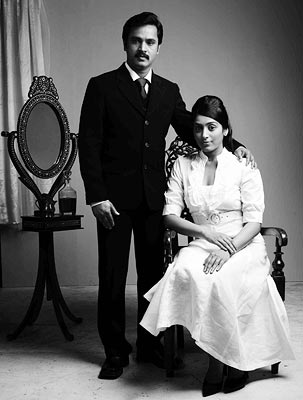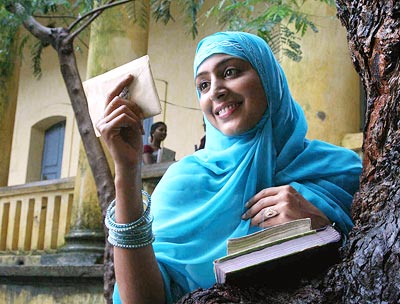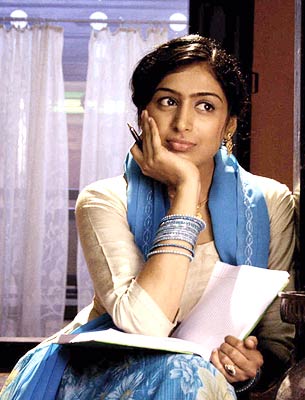 | « Back to article | Print this article |
Cheran's Pokkisham, an ode to pure love
Cheran, a man from a sleepy small village in Tamil Nadu came to Chennai in 1997 with his first film Bharati Kannamma and won the heart of all Tamils.
Now, the filmmaker is almost ready with his ninth film Pokkisham.
"It is my desire to showcase the beautiful nature of my land and people that led me to make this film. Love is the most beautiful feeling one goes through but pure and beautiful love which once dominated Tamil culture and literature is lost today due to the advancement of technology.
"Love is a 'treasure,' Pokkisham, to be cherished, and throughout my film, I want to rekindle the feeling of pure love and I want everyone to nurture and protect it. I intend retrieving the 'love treasure' that is within me, you and everyone through Pokkisham on screen," Cheran said.
Cheran's Pokkisham, an ode to pure love
The story revolves around two lovers -- a Muslim Tamil literature student and a Hindu marine engineer working in Calcutta. The story takes place in 1970.
A friendship develops between them with their love for literature. But with each letter they write to each other, to and from a small village in Tamil Nadu and Calcutta, the relationship transforms to love.
Cheran's Pokkisham, an ode to pure love
The treasure (Pokkisham) of their memories form a huge bunch of love letters as those were the seventies; there was no email or SMS to connect people- only the letters written and posted in the red box.
As can be expected, there are stumbling blocks in the love affair. Whether their pure love overcome those blocks is what the film is about.
Cheran's Pokkisham, an ode to pure love
As it is a film set in the 1970s, the art director had to see to it that 'Calcutta' and 'Madras' of the 70s were captured authentically.
Vairabalan, the art director is a native of Thirubhuvanam, in Sivaganga district. His first film was the 2001 release Kaadal Sadugudu. He was introduced to Cheran when he did the art direction for the latter's production Azhagayirukku Bhayamayi Irukku.
Impressed with the art director, Cheran made him the art director of Maya Kannadi, his last directorial venture and also Raman Thediya Seethai, a film in which Cheran played a major role.
"As the story is set in the 70s, we had to do a lot of research before starting work. We are confident that we have succeeded in our endeavour. Whether it is a matchbox or the look of a post box, or the post office or tram or train or buses or hospitals, we tried to be true to what it was then. We have also reproduced the old Madras and the old Nagore streets faithfully," says Vairabalan.
Cheran's Pokkisham, an ode to pure love
The cinematographer of Pokkisham is Rajesh Yadhav, and this is his eighth film, and first with Cheran.
"Cheran always gives importance to human relationships, story and dialogues. The period in which the story is set is also important this time. So we lighted the sets in tune with the times. Cheran agreed with me to shoot two night scenes with just kerosene lamps. For the hospital scenes, we used 25 petromax lights. And we used hurricane lanterns for scenes shot in Calcutta. Cheran also wanted me to shoot Calcutta from early morning till night which was an experience for me."
Cheran's Pokkisham, an ode to pure love
For the editors Saravana and Iyappan, Pokkisham is their third movie together, after Pirivom Sandippom and Kuselan. They are working with Cheran as the director for the first time.
"As the story spans the period from 1970 to 2009, editing was a big challenge for us. The scenes were toned and tuned differently for the 1970s and for 2009. To accentuate the change in the tone, we changed shots from one to the other."
Cheran's Pokkisham, an ode to pure love
For Cheran the director, the journey started with Bharati Kannamma in 1997.
He must have directed only eight films in these years but with Tamil Nadu state awards for his second film Porkkaalam in 1997 and Vetri Kodi Kattu (2000), National awards for Vetri Kodi Kattu (2000), Autograph and Thavamai Thavamirundu, he is one of the highly rated and respected directors in Tamil.






